
Back in the day, strapping a piece of foam to your head looked as bad as it sounds. While the picnic cooler liner has been the bicycle helmet’s mainstay of protecting power since the mid-80s, elements of comfort, convenience, and aesthetics have come so far that today’s MTB skid lids are now as much a fashion statement as a necessary evil.
Choosing the best mountain bike helmet is like choosing the best bike — the main thing that matters is that you have (and wear) one. That said, safety features, fit, comfort, convenience, and yes, even style, means some helmets will be better than others.
We’ve been testing and reviewing mountain bike helmets for more than a decade, and in that time we’ve learned a lot about what makes for a great mountain bike helmet. In this guide we’ll share our favorites, offer helmet buying tips, and answer riders’ frequently asked questions. This is a long one so feel free to use the links below to jump ahead.
The Best Mountain Bike Helmets We Recommend
Every year we review a dozen or more of the latest helmets for mountain biking, and we’ve tested close to 100 of them since we started. Through the course of our testing we always evaluate:
- Helmet fit and comfort
- Safety features
- Convenience features
- Price and value
- How the helmet compares to others on the market
If you’re searching for the right half-shell or full face helmet, do yourself a favor and check out some of these mountain bike helmets for the safety features and styles that best suit your riding. Note: this is not a list of all the helmets we’ve tested; these are just the best helmets we recommend.
Best Mountain Bike Helmets (Half-shell)
| Helmet | Price | Sizes | Notes |
|---|---|---|---|
| Lazer Coyote Kineticore | $110 | S, M, L, XL | Rotational protection, Fidlock chin strap buckle |
| Lazer Jackal Kineticore | $219 | S, M, L | Rotational protection, lightweight, Fidlock |
| Fox Speedframe Pro | $199.95 | S, M, L | MIPS Air Node, Fidlock. $109 for the basic MIPS version. |
| POC Kortal Race MIPS | $250 | S, M, L | Enduro helmet with NFC chip for storing medical info, RECCO Reflector |
| Bontrager Rally Wavecel | $160 | S, M, L, XL | WaveCel concussion reduction tech |
| Kask Caipi | $180 | S, M, L | Lightweight enough for XC and gravel riding |
| Sweet Protection Trailblazer | $179.95 | S/M, M/L, L/XL | MIPS, top-performing in VA Tech test |
| 100% Altis | $125 | XS/S, S/M, L/XL | 3-position visor, rotational impact protection |
| Scott Argo Plus | $119.95 | S/M, M/L | Lightweight, stylish, and 5-star VA Tech rating |
| Smith Forefront 2 | $250 | S, M, L | MIPS and Koroyd safety tech |
| Bell 4Forty | $110 | S, M, L, XL | MIPS, adjustable visor |
| Specialized Tactic | $120 | S, M, L | MIPS Evolve, ANGI sensor compatible, e-bike rated |
| Endura MT500 | $240 | S, M, L | Koroyd and MIPS safety tech |
| 7iDP Project.21 | $229.99 | XS/S, M/L, XL/XXL | Good fit for larger heads, adjustable visor, Fidlock buckle |

Lazer Coyote Kineticore
Tester: Jeff Barber
The Lazer Coyote Kineticore looks great, feels great, and promises to keep mountain bikers safe on the trail for a reasonable price. This helmet costs about half as much as the Jackal recommended below with many of the same great features like rotational impact protection, a 3-position visor, and Fidlock chin strap buckle.
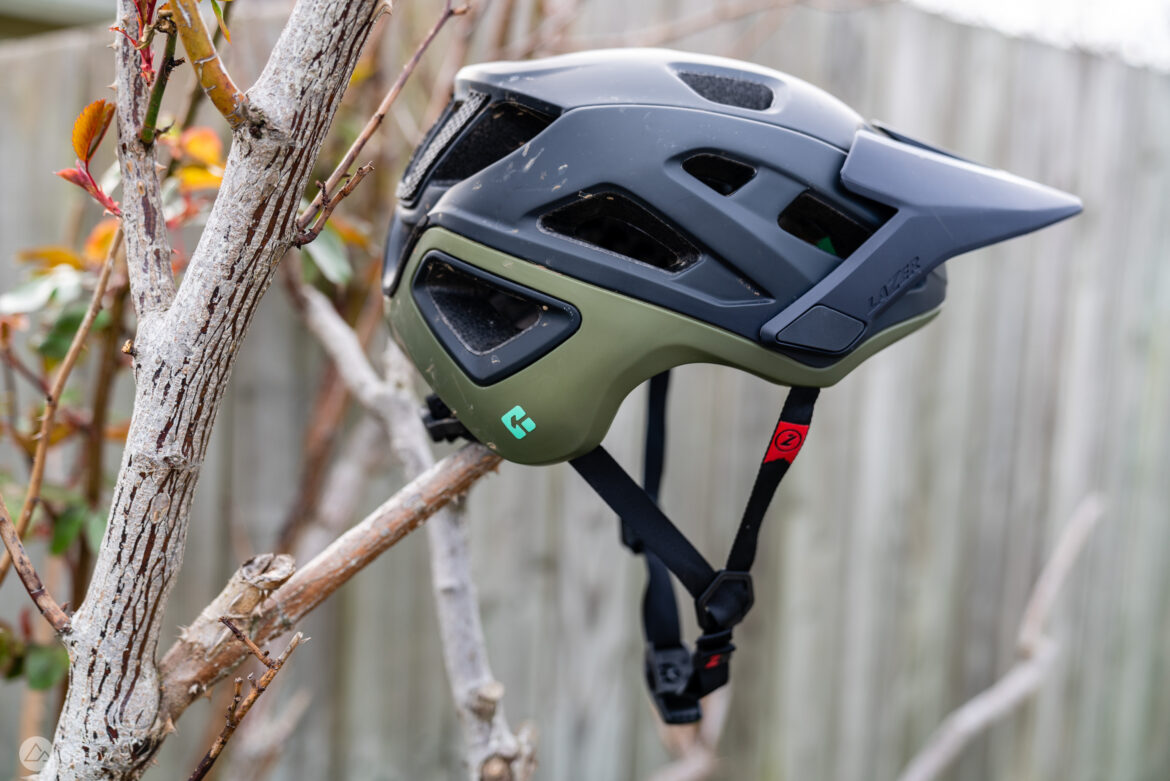
Lazer Jackal Kineticore
Tester: Gerow
Lazer did nearly everything right with the Jackal Kineticore half-shell helmet. Rotational impact protection? Check. Kineticore is Lazer’s version of MIPS, and the helmet scored a 5-star VA Tech rating. Weighing 383g for a size large, the helmet is lightweight and comfortable on the trail. Standout features include a Fidlock buckle, an integrated red LED for safety, an accessory mount for a camera or light, and good eyewear storage. Read our full review of the Lazer Jackal Kineticore helmet. We also like the Lazer Impala.
- Price: $220
- Protection Technology: Kineticore
- Available at REI and other online retailers

Fox Speedframe Pro MIPS
Tester: Jeff Barber
The Fox Speedframe is a popular mountain bike helmet among riders, and for good reason. As a best-selling helmet there are a few different models offered at varying price points, though for our money we like the Speedframe Pro. This version packs all the goodies like MIPS, a Fidlock chin strap buckle, massive vents, and a 3-position adjustable visor. We found the Fox Speedframe feels comfy, vents well, and fits great. Read our full review of the Fox Speedframe Pro.
- Price: $199.95
- Protection Technology: MIPS
- Available at Jenson USA and other online retailers.

POC Kortal Race MIPS
The POC Kortal Race MIPS is an aggressive half shell helmet that’s a good choice for all-mountain and enduro riding. This beefy helmet isn’t the lightest on our list, but it is comfortable and does vent well for an enduro helmet. In addition to MIPS protection, the Kortal Race includes an NFC chip that can be programmed with the rider’s emergency contact and medical info that first responders can access in case of an emergency. It also has a passive RECCO Reflector rescue transponder built in to assist backcountry rescue. Read the full review of the POC Kortal Race MIPS.
- Price: $250
- Protection Technology: MIPS
- Available at Backcountry and other online retailers.
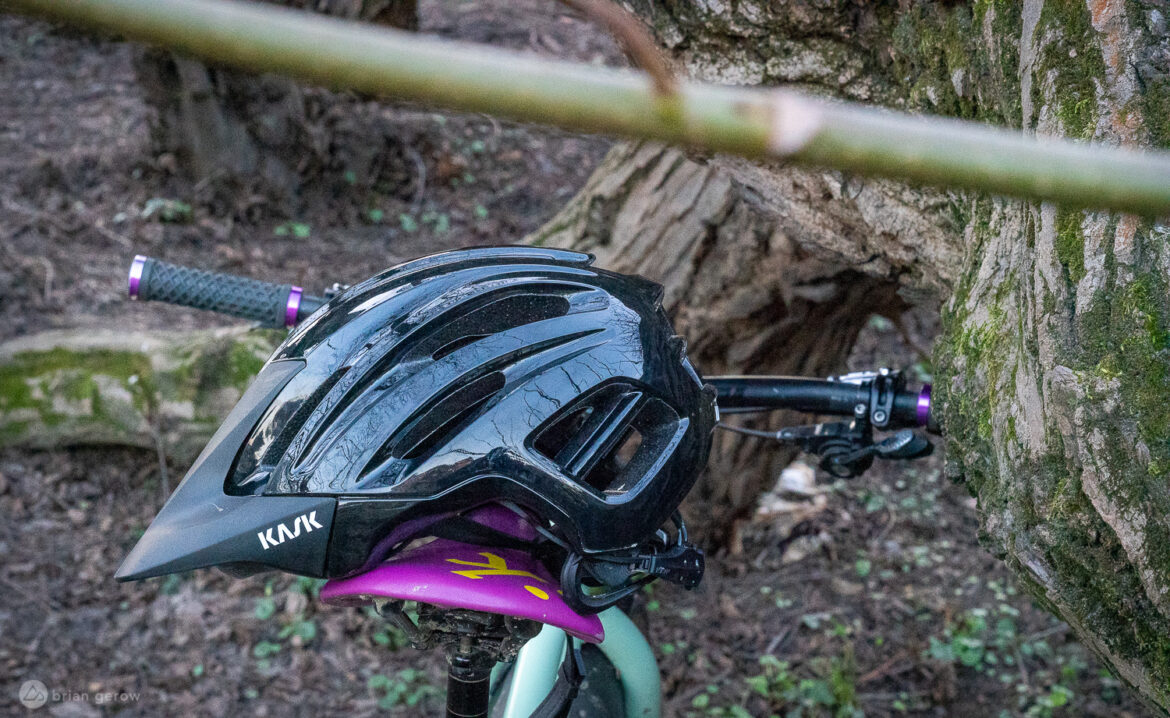
Kask Caipi
The Kask Caipi mountain bike helmet is one of the lightest helmets we’ve tested, making it a good choice for trail, XC, or even gravel riding. Kask uses their proprietary Octo Fit retention system to give riders a secure and comfortable fit. One of the tradeoffs to such a lightweight and well-vented design is the lack of MIPS or any type of rotational impact protection system. Read our full review of the Kask Caipi.
- Price: $180
- Protection Technology: None
- Available at JensonUSA and other online retailers.

Bontrager WaveCel Rally
Tester: Matt Miller
Bontrager says the WaveCel tech in the Rally helmet is 48 times better at preventing concussions than a helmet without it, and its #8 ranking in the VA Tech tests as of 2022 seems to back that up. We found that in addition to the safety tech, the WaveCel Rally feels comfy, looks good, and vents well on the trail. Our size medium test helmet weighs 392g making it one of the lighter trail helmets on the list. Read our full review of the Bontrager WaveCel Rally.
- Price: $160
- Protection Technology: WaveCel
- Available at Trek Bicycles and other online retailers.

Sweet Protection Trailblazer
The Sweet Protection Trailblazer received a STAR test score of 8.89, the third best of any bike helmet, MTB or road, as of 2022. The helmet offers good coverage and still vents extremely well. Good looks and an overall comfortable fit and feel make this a strong favorite among the mountain bike helmets we’ve tested. Read our full review of the Sweet Protection Trailblazer.

100% Altis
Tester: Gerow
The 100% Altis is one of the more affordable mountain bike helmets we recommend. Unlike some of the other budget helmets we’ve tested, the Altis has a 3-position visor and includes rotational impact protection in the form of the Smartshock Rotational Protection System (SRPS). Overall the helmet looks good and the 14 vents allow for good airflow on the trail. It’s not overly heavy, with the XL helmet we tested weighing 397g. Read our full review of the 100% Altis.
- Price: $125
- Protection Technology: Smartshock
- Available at Jenson USA and other retailers
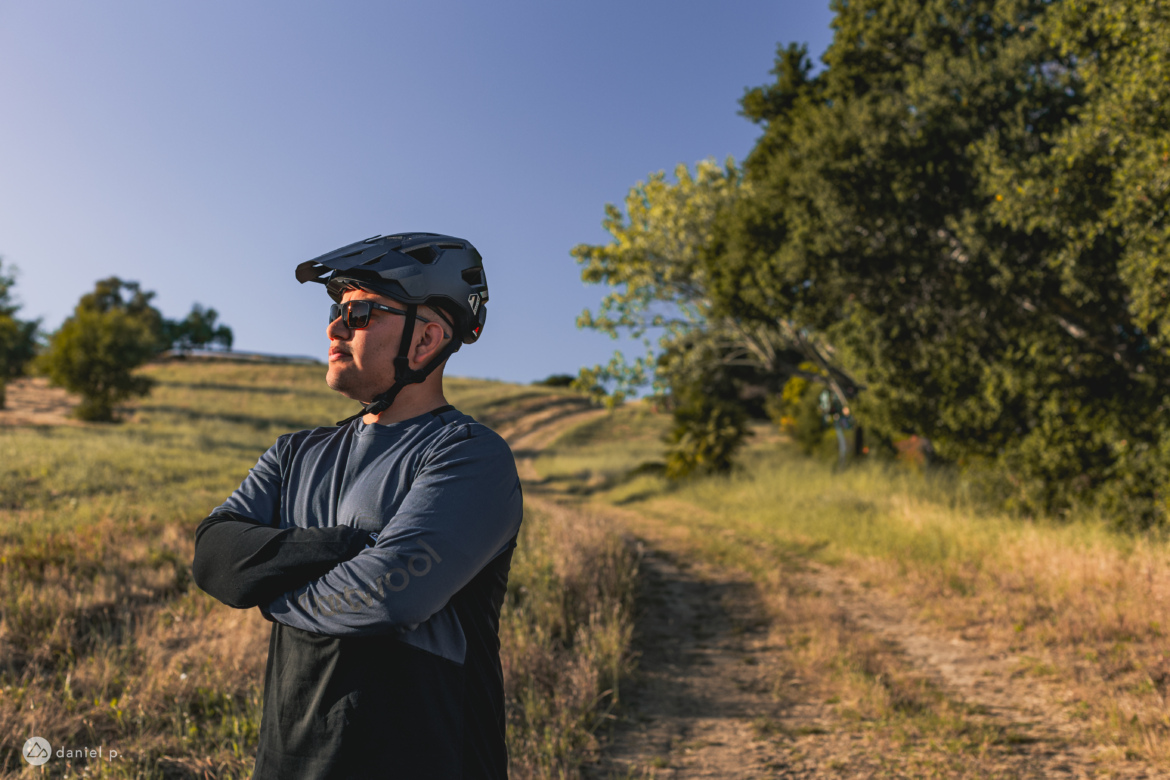

7iDP Project.21
Reviewer: Daniel Palma
The 7iDP Project.21 has a little bit of everything I have been looking for in a half-shell helmet. The comfort and fitment are great, and the protection technology is confidence-inspiring. This is a well-rounded helmet full of features to keep up with demanding riders. If you have a large head and have trouble finding a bike helmet that fits, the size XL/XXL 7iDP Project.21 is one the bigger helmets than most we’ve tried.
- Weight: 430g (size XL/XXL)
- Price: $229.99
- Buy from Backcountry
After completing the survey above you can see the results.

Scott Argo Plus MIPS
The Scott Argo Plus is the least expensive mountain bike helmet we currently recommend, but buyers still get a helmet that’s stylish, fairly lightweight (350g for size S/M), well vented, and has MIPS rotational impact protection. Buyers will have to compromise a bit at this price point, however, on fit (there are only two sizes available) and the visor (it’s fixed). Read our full review of the Scott Argo Plus.
- Price: $119.95
- Protection Technology: MIPS
- Available from Backcountry

Smith Forefront 2 MIPS
Tester: Jeff Barber
The Smith Forefront 3 is a popular helmet with mountain bikers thanks to its stylish looks and comfortable fit. We found it vents extremely well and we’re impressed with the Koroyd and MIPS safety tech packed inside. Read our full review of the Smith Forefront 3.
- Price: $250
- Protection Technology: MIPS
- Available at Smith Optics and other online retailers.

Bell 4Forty
The Bell 4Forty is a straightforward trail helmet at a good price that’s well vented with a 3-position visor and a style that most riders can get along with, making it an easy choice. It also features MIPS and extended rear coverage. Look for an in-depth review coming soon.
- Price: $110
- Protection Technology: MIPS
- Available at JensonUSA and other online retailers.

Specialized Tactic 4 MIPS
The Specialized Tactic 4 MIPS is a popular entry- to mid-level mountain bike helmet choice packed with modern features like a mount for an ANGI crash sensor and MIPS Evolve which is designed to be more comfortable and provide a better fit than standard MIPS tech. Not only that, the Specialized Tactic is e-bike rated (NTA 8776 certified) and includes an eyewear channel for storing your shades.
- Price: $120
- Protection Technology: MIPS Evolve
- Available from Specialized and other online retailers.

Endura MT500
Tester: Matt Miller
The Endura MT500 isn’t cheap but it is fully featured, with MIPS and Koroyd safety tech, an adjustable visor, a GoPro/light mount, eyewear grippers, an adjustable dial and anti-bacterial padding. It’s also covered by a reduced cost crash replacement warranty. Endura did a great job with the fit, aesthetic, and the comfort of the MT500. Though it isn’t perfect, it’s my favorite helmet lately. Read Matt’s full review of the Endura MT500 helmet.
- Price: $240
- Buy from JensonUSA and Backcountry.
Best Full-face Mountain Bike Helmets
| Helmet | Price | Sizes | Notes |
| Smith Mainline | $310 | S, M, L | MIPS, 21 vents, includes 3 sets of pads |
| iXS Trigger FF | $259 | XS, S/M, M/L | Dial-based fit system, Fidlock chin buckle |
| Leatt MTB Gravity 1.0 | $99 | XS, S, M, L, XL, XXL | The premium Leatt MTB 8.0 is also recommended |
| O’Neal Fury RL | $160 | XS, S, M, L, XL | Great value |
| Giro Insurgent | $350 | XS/S, M/L, XL/XXL | MIPS Spherical |
Smith Mainline

The Smith Mainline full face mtb helmet gets high marks for comfort and ventilation, with massive vents along the front, sides, and back that are reinforced with a grid of Koroyd. Smith includes a total of three sets of cheek pads so riders can dial in the fit, and there’s a study D-ring buckle on the chin strap. The Smith Mainline features MIPS rotational impact protection and excellent wraparound coverage. The approximately 800g weight isn’t too bad, and the Mainline definitely gets overall style points for its clean and modern look. Read our detailed review of the Smith Mainline.
- Price: $310
- Protection Technology: MIPS
- Available at Smith Optics and other online retailers.
iXS Trigger FF

The iXS Trigger FF helmet is lightweight and well vented, making it a great choice for summer bike park riding. The “Ergofit Ultra” fit system uses a ratcheting dial similar to half shell helmets which makes it easy to find the right balance between security and comfort. The chin strap features an easy-to-use Fidlock buckle, though the helmet does not include any sort of rotational impact protection. Read the full review of the iXS Trigger FF.
- Price: $259
- Available at JensonUSA and other online retailers.

Leatt MTB Gravity 1.0
It’s hard to believe that you can buy a good full face mountain bike helmet for under $100, but the Leatt MTB Gravity 1.0 delivers. In fact, we put it head-to-head with the more expensive Leatt MTB Gravity 8.0 helmet and found they performed pretty similarly (read the full review). Both helmets feature Leatt’s rotational impact protection tech, Turbine, and the budget-friendly 1.0 actually weighs less than the more feature-rich and moto-rated 8.0.
- Price: $99.99
- Available at Jenson USA

O’Neal Fury RL
The O’Neal Fury full face helmet is a great value, especially given its premium features like a Fidlock chin strap buckle and included GoPro mount. The removable liner can be washed and overall we found the helmet provides a good fit and comfort. Read our full review of the O’Neal Fury.
- Price: $119
- Protection Technology: none
- Buy from O’Neal.
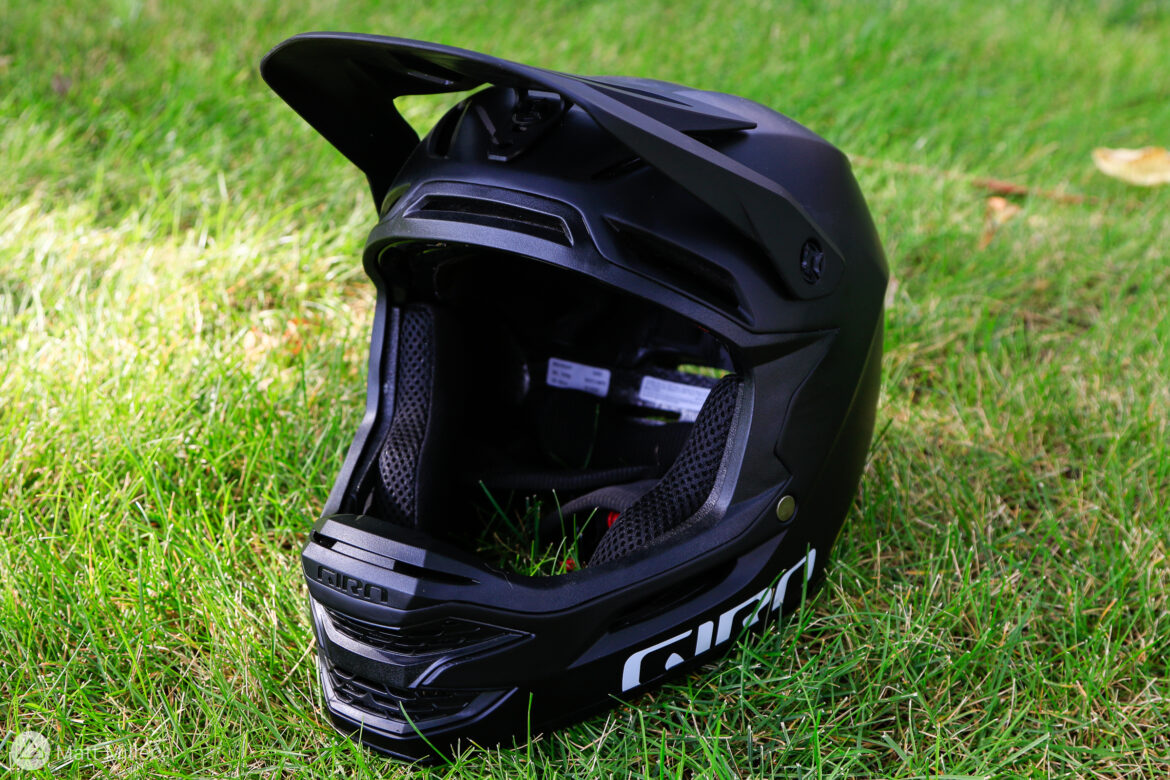
Giro Insurgent
The Giro Insurgent packs the latest MIPS Spherical safety tech and with 20 vents, promises to keep riders cool on the trail. It’s not the most lightweight DH helmet on the market but it’s comfortable enough to wear at the bike park for hours. Read our full review of the Giro Insurgent full-face helmet.
- Price: $350
- Protection Technology: MIPS Spherical
- Available from Backcountry and other online retailers.
Best Convertible MTB Helmets
Editor’s note: While we can recommend the following convertible mountain bike helmets, that recommendation comes with an asterisk. A convertible helmet involves compromises compared to dedicated half-shell and full-face mountain bike helmets. If you’re looking for one or the other, or can afford to buy two helmets, you’ll be much better off choosing a helmet off the respective lists above. That being said, some riders — particularly those racing enduro — like the convenience of a convertible helmet despite the compromises and tradeoffs involved.
| Helmet | Price | Sizes | Notes |
| Bell Super DH Spherical | $350 | S, M, L | MIPS, Fidlock buckle, adjustable visor |
| MET Parachute MCR | $379 | S, M, L | MIPS, magnetic release chin bar, Fidlock, BOA |

Bell Super DH Spherical
This is the convertible mountain bike helmet that basically started it all, and over the years Bell has refined the helmet and added more options including the latest which features MIPS Spherical. The Bell Super DH is a downhill-certified helmet with a tool-free, removable chin bar to convert from full-face to half-shell. It also features a premium Fidlock buckle, adjustable visor, and decent venting for a comfortable ride feel. Read our review of the Bell Super DH MIPS.
- Price: $350
- Protection Technology: MIPS
- Buy from JensonUSA and other online retailers.
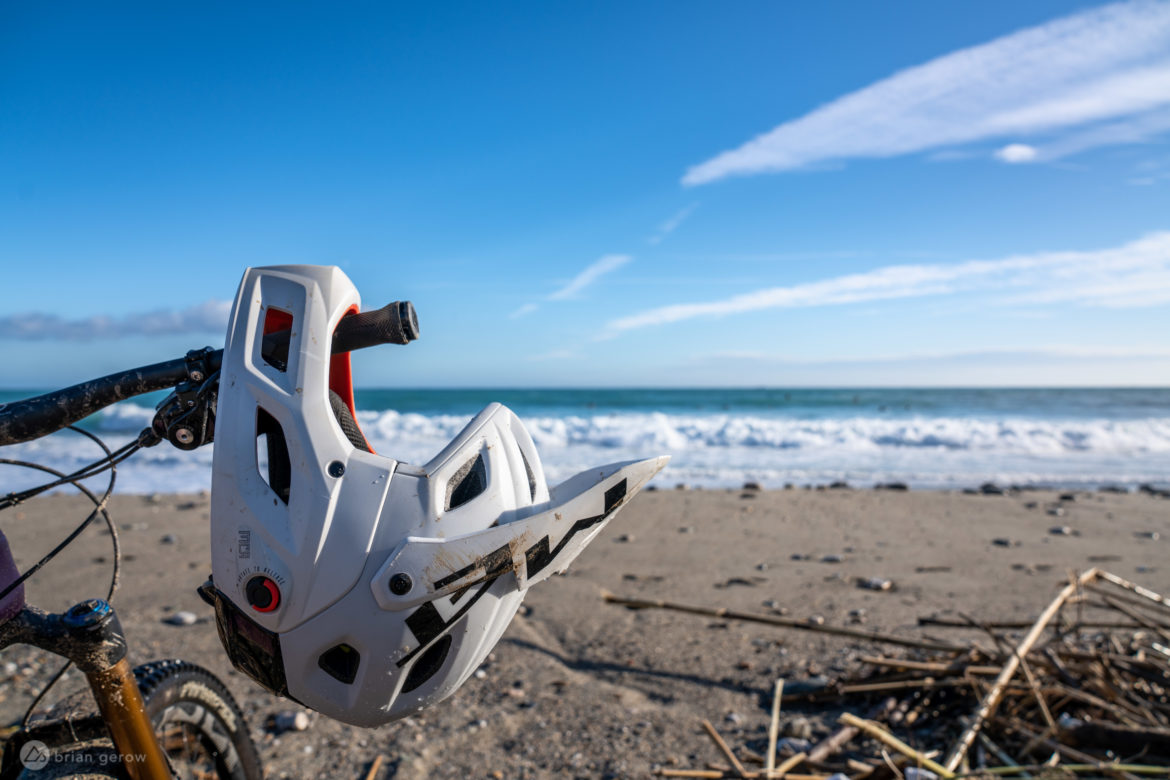
MET Parachute MCR
The MET Parachute MCR convertible helmet also features a tool-free, removable chin bar (the MCR stands for Magnetic Chinbar Release, in case you were wondering). The helmet also comes stacked with MIPS, a Fidlock buckle, 21 vents, and a Boa dial for adjusting the retention system. MET also includes two sets of pads in the box to help dial in the fit. Read our full review of the MET Parachute MCR.
- Price: $379
- Protection Technology: MIPS
- Buy from Jenson USA and Worldwide Cyclery
Best Budget MTB Helmets
While we’ve tested several helmets priced well under $100, only the Scott Argo Plus and Leatt MTB Gravity 1.0 helmets made our final list of recommended helmets. That’s not to say that the others won’t do the job; rather, we think buyers will be much happier spending a bit more for a fully featured and comfortable helmet. If MIPS and a low price takes priority over comfort and style, check out the extremely affordable LIV Path. For those with a hard $100 limit but still want to look good and aren’t as concerned about comfort or fit, check out the Fox Mainframe, which includes also MIPS.
Best Lightweight MTB Helmets
Among the mountain bike helmets we recommend, the Rudy Project Crossway and Kask Caipi offer the lightest weight. If you’re interested in wearing a road helmet for mountain biking (more about that in the FAQ below), the Specialized Propero III (tested) offers a good value and is extremely lightweight.

Mountain Bike Helmet Buyers Guide
These are the things that we look at when evaluating any bike helmet. Use this as a guide when making your own purchase decisions.
Helmet Safety Standards
By law, every bicycle helmet sold in the United States since March 1999 must meet the Consumer Product Safety Commission (CPSC) minimum safety standard. Other certifying organizations have come and gone before 1999 and some still exist, but are either voluntary stamps of approval or apply in specific applications. Denoting the US certification preference is important because, although the CPSC is widely used throughout the world, some countries have adopted their own standards. CE is the main helmet safety standard used in Europe. And there’s a standard known as ASTM DH that is applied to full-face helmets.
Most standards follow a similar testing protocol. The helmet is secured to a head form that measures g-force (G) on impact after being dropped one to two meters onto an anvil. A study has shown that 90-100 Gs can cause concussion, and higher-force impacts may lead to unconsciousness and/or permanent head injury.
Helmet strap strength, amount of coverage, and stability when yanked are also tested.

It’s important to note what a safety standard does not tell you. The CPSC and others set minimum requirements based on data gathered in a laboratory. While you may not suffer permanent brain damage with a helmet, most certifying agencies set the failure threshold at 300 Gs — a force that, at the very least, will likely knock you unconscious. The standard also does not tell buyers how far a helmet exceeds the minimum. Put another way, certifications are pass/fail and cannot provide a basis of comparison.
Virginia Tech collaborates with the Institute for Highway Safety to test and rate helmets using what’s known as the STAR evaluation system. “We rate each bike helmet based on the results of 24 impact tests in our laboratory. A drop tower designed to match helmet-to-ground characteristics in cycling is used to test the helmets. We measure linear acceleration and rotational velocity for each impact, which are correlated to concussion risk.”
Unlike CPSC and other helmet standards, the Virginia Tech helmet test results in a numerical score, with a lower score indicating better protection. To simplify the system, helmets are awarded between one (worst) and five (best) stars based on their score. As of this writing, 89 bike helmets are rated five stars out of 161 helmets tested. Also as of this writing, the Specialized Tactic 4 MIPS, Specialized Prevail 3, and Sweet Protection Trailblazer MIPS received the three lowest (best) scores.
Finally, a lab is not a trail and we don’t recall the last time we were able to predict a fall from a height, speed, and temperature onto a surface or shape of our choosing.
The take home: no certification can guarantee you won’t break yourself upon any impact.
E-bike helmet safety standards
NTA-8776 is a relatively new helmet safety standard that seeks to address the higher speeds associated with e-bike riding, and the standard prioritizes extended head coverage as well. Since NTA-8776 generally goes above and beyond existing bicycle helmet standards, it can be a nice-to-have even for non-electric bike riders. The Specialized Tactic 4 is one of the MTB helmets we recommend that meets the NTA-8776 standard.
Rotational Impact Protection
MIPS is easily the most familiar rotational impact protection system on the market. From our MIPS primer, “MIPS is a thin layer of material that goes between your head and your helmet…allow[ing] your helmet to rotate on your head in an impact while still wearing it snugly in normal riding.” The slip plane concept makes sense in theory, but if not executed correctly, does no more than jack up the prices on helmets that are just as safe (and cheaper) without MIPS. Here is a more thorough background on MIPS along with a summary of more salient points regarding the limitations of MIPS.

- The slip plane concept requires a full sliding layer that many companies are not employing correctly. The layer interface either doesn’t fully encompass the helmet or fails to provide the appropriate sliding material.
- The scalp (especially coupled with hair, oil, and sweat) is Mother Nature’s MIPS. Not only that, some wearers report basic MIPS liners snag hair and are noisy and/or uncomfortable.
- Adding a layer for MIPS may result in companies decreasing the thickness of the EPS liner, which is more important in mitigating overall head trauma.
- Rounder, smoother helmets may be just as good as MIPS at providing a slip-able plane.
Consumers and helmet manufacturers have mostly concluded that offering some form of rotational impact protection is a good idea. It’s important to note that MIPS is a trademarked technology, and that there are many other technologies that seek to provide similar protection against rotational impact and the risk of concussion. While there may be some uncertainty around the effectiveness of these technologies, these days it adds little or nothing to the cost of a helmet.
Helmet Fit and Sizing
When it comes to helmets, fit is synonymous with safety, but fit is not standardized under any test. It’s up to you to determine proper helmet fit. The shape of the mold is selected by individual helmet manufacturers, which is why some helmets fit certain riders better than others.
Most helmet manufacturers provide a sizing chart to convert the circumference of your head to the proper helmet size. Take a tape or a piece of string and measure the circumference of your head at the widest part; this is where the helmet retention system will sit (about 1-2cm above your eyebrows). Some helmet brands offer more limited size choices than others, and if you’re in between sizes it’s usually best to size down. Every helmet company sizes their lids differently so it’s important to double check your head circumference and the sizing chart when you shop for a new helmet. Knowing you have a “small” head isn’t good enough; you should know how small it is.
Here are some tips for fitting a half shell and full face mountain bike helmet:
- The inside of the helmet should come in contact with your entire head and sit level, just above the brow, without interfering with vision.
- The one-size-fits-many ring system should be tensioned enough that your scalp moves with the helmet.
- More expensive helmets have two to three height adjustments for the rear stabilizer to further tune the fit.
- Straps should be tight enough that the helmet moves no more than an inch from level.
- Straps meet at a Y that is adjusted just below the ear.
- When fastened, check the buckle’s strength by giving it a quick tug.
- If the helmet moves more than an inch or slides over the scalp after the above steps, it may not work for your head.

How to Fit a Full face Helmet
Due to additional adjustability, finding the right half shell is not nearly as tricky as a full face, which depends on inner pads and a mold that best suits your head.
- A properly-fitted full face should almost feel too snug. Don’t worry, that squishy foam padding will soon pack out to where it feels just right.
- Make sure there are no voids between helmet and head.
- Cheek pads should feel firm enough against your cheeks that you cannot fully puff them out and to the point it makes speaking a little more difficult.
- With the chin strap fastened, grab the chin bar and rock the full face to and fro; your scalp should move with it.
- If you plan on rocking a neck brace, make sure it fits with your new helmet.
Helmet Materials and Construction
Despite the variety of shapes, vent orientation, tensioning systems, and other features, nothing on your helmet is more important than the crushable foam liner sandwiched between the outer shell and your head. Liners are made from beads of expanded polystyrene (EPS) that spread the energy of an impact by deformation, bringing your head to a slower stop. EPS can be tuned to a density that fits the helmet’s application (softer for slow speed impacts and harder for high speed). Some companies employ multiple foam thicknesses to achieve the best of both.
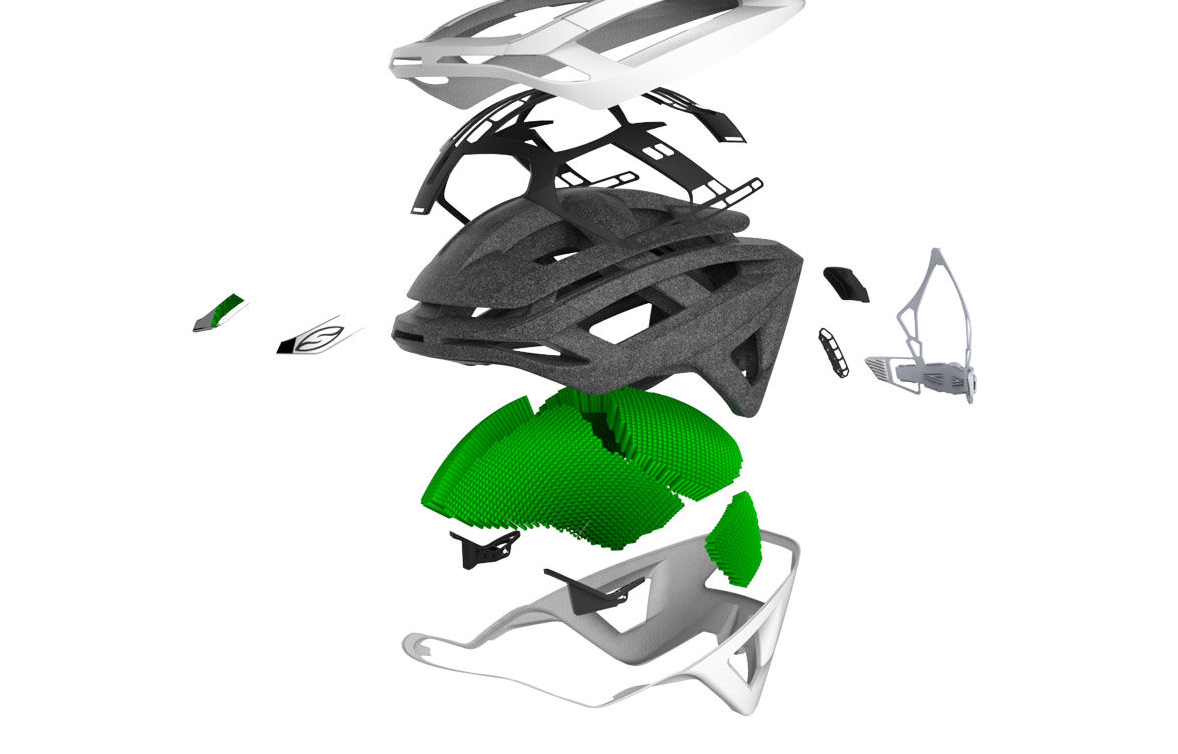
Without the outer shell we’d all look like we’re packing perishables to a picnic. Besides providing a more agreeable surface for pinstripes and decals, the outer shell protects the crushable liner and provides a smooth surface so the helmet slides along the trail instead of snagging. Entry-level helmets typically have plastic shells glued to the EPS, while higher-end lids bond the shell to the liner in-mold during polystyrene expansion. The outer shell protects the inner shell, which protects your head. While it might seem like a crack or hole in the outer shell is no big deal, it could eventually cause the EPS layer to become compromised and unsafe.
Most helmets are produced in China today. One helmet expert tells us the country has “some of the most developed and sophisticated helmet manufacturing facilities available in the market.”
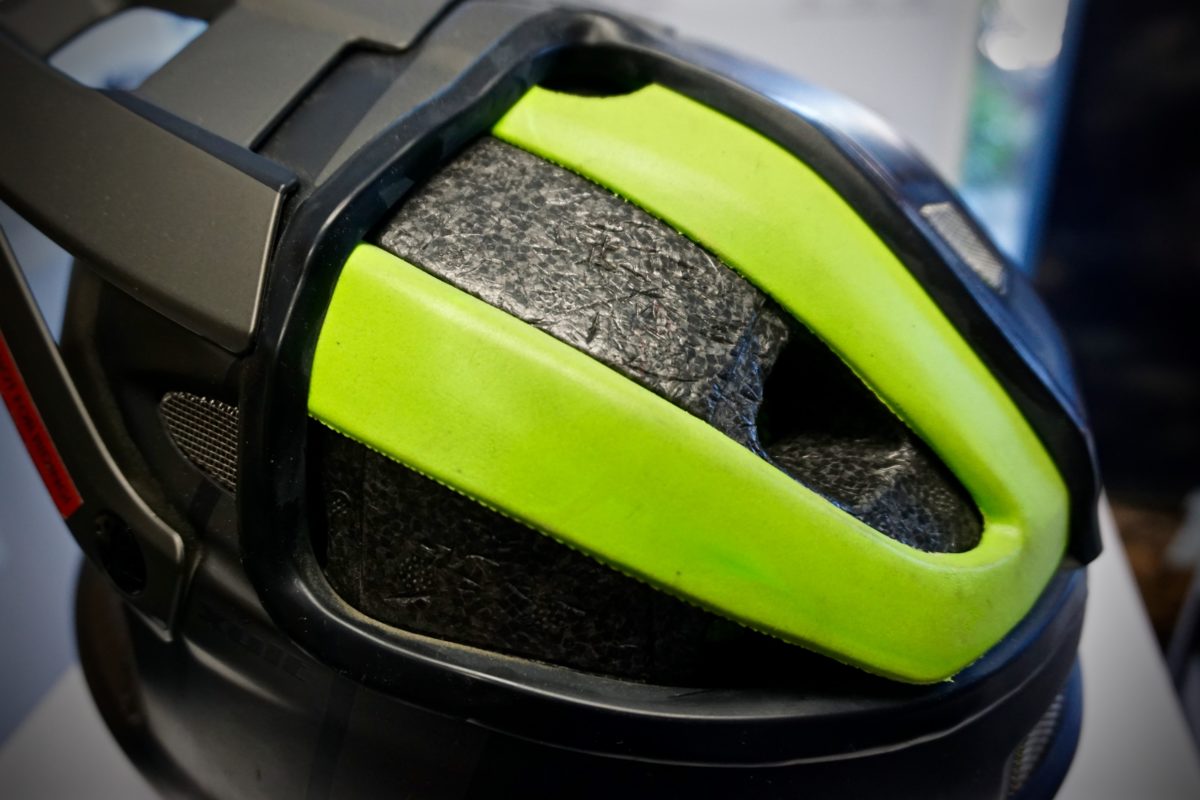
If your budget allows, in-molding construction is highly recommended for two important reasons. First, by nature of the process, in-mold requires a higher quality shell which better protects you and the EPS liner. Second, because the shell and liner essentially become one, dents are more visible to help you identify underlying cracks in the EPS that would otherwise be masked by dead space between two glued layers.
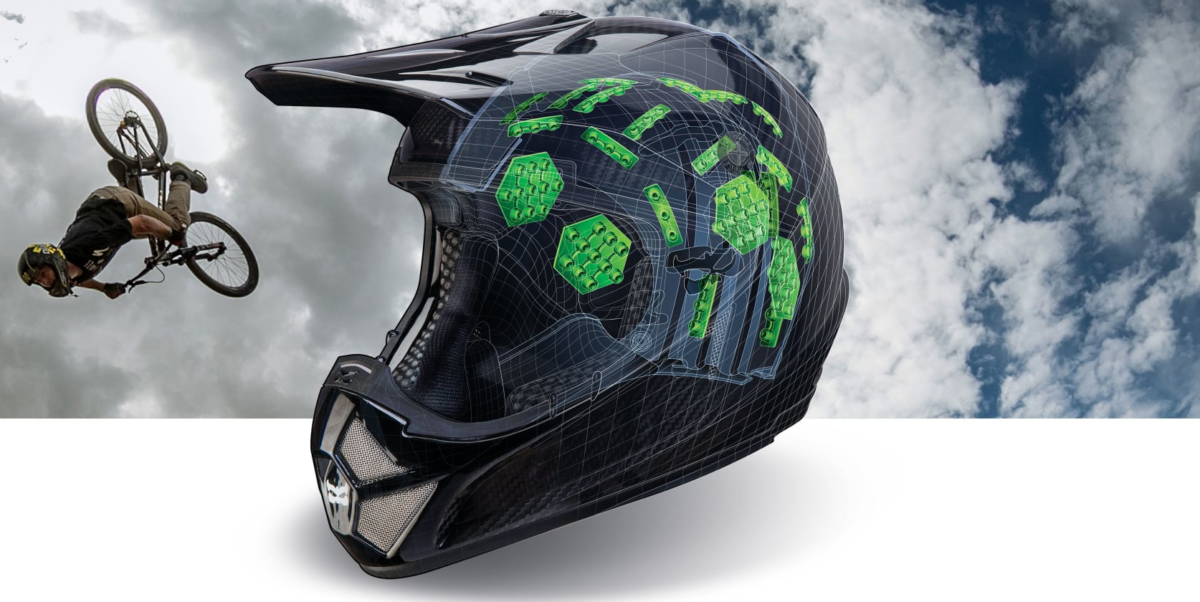
Beyond the foam liner, straps, and ensuring a proper fit, every other helmet feature either provides more comfort or convenience. These features also happen to be the main reason why a helmet might cost $160 more than a helmet meeting the same CPSC standard. There is no shortage of bells and whistles here, so we’ll address some of the more common features.
Helmet Ventilation
Ventilation ports are strategically placed to draw air in and channel it to exit points, thus cooling by convection. Larger front vents are better at determining a helmet’s ability to cool. Given the density and thickness of the foam liner, the ability to protect your head is always at odds with keeping it cool. Increasing ventilation with either more or larger ports requires a denser foam or liner reinforcement which may actually transmit more g-force to the head on impact. In other words, more vents are not always better.

Many companies do a nice job explaining away their helmet’s cooling capabilities, but testing is difficult and subject to several limitations. Case in point, a change in head angle of just a few degrees makes a big difference in how air is channeled through vents. Other confounding factors include a proper fit, hair, and sweat.
Half-shell vs. Full-face Helmets
More and more mountain bikers are choosing to wear full-face helmets away from the DH course for added facial and head protection. On the plus side, full-face helmets are better at preventing certain types of injuries, keep the face and ears warm on cold days, and protect the chin and jaw well. However, full-face helmets are generally heavier and not as well ventilated as half-shells, making them less comfortable overall. Some riders also complain about a limited field of vision and difficulty hearing and hydrating when wearing a full-face helmet.
Buyers can find full-face helmets priced as low as $100, which is on par with a decent half-shell helmet. Premium helmets can be extremely lightweight, and newer full-face helmets offer improved ventilation.
Convenience Features
By now, you’ve whittled your helmet options to a fairly short list. Just to make matters more difficult, consider the frosting on the cake. While these features should fall lower on the list of priorities, they can make the difference between a great helmet and one that is perfect.
Chin straps and buckles: Most helmets utilize nylon chin straps, and some are softer/more comfortable than others. Budget-friendly helmets typically use a plastic buckle fastener, while more premium helmets may feature a magnetic, Fidlock chin strap closure. Some downhill helmets use a D-ring closure which is not as convenient as snap-style closures but do tend to be very secure. D-rings can be tricky to operate when wearing gloves.
Removable chin bar: the ability to transform a half shell into a full face is a good fit for those looking for an extra edge, peace of mind, or for those who can’t afford a dedicated DH lid. While a convertible helmet does not replace the protecting prowess of a full-fledged, full-face helmet, it gets pretty damn close, with some even passing ASTM certification. Removing the chin bar is often easier said than done, and there are tradeoffs to the design compared to dedicated half-shell and full-face helmets.
Eyewear fit and goggle storage: Most DH helmets work well with most goggles, but half shell heights, straps, and occipital coverage can make a new helmet purchase turn into a new sunglasses purchase. Take your googles and/or shades along when shopping to make sure they play nice with the helmet(s) you’re considering.

Crash sensor: Some helmets include electronic crash sensors, or the ability to add one down the line. These technologies are known by brand names including ANGi, ICEdot, and QUIN. In general, helmet crash sensors can detect a fall or impact, and send a wireless signal to a smartphone app that’s set up to notify close contacts or emergency personnel. Some helmets may feature a chip for storing emergency medical information, or a passive rescue beacon for use in emergencies.
Visor: inspect the visor and its attachment points for ease of use and potential durability issues. Lower end helmet visors snap into place using small plastic stems, while higher-end helmets offer tool-free screws for adjusting and removing. Some visors are fixed — that is, they can’t be raised or lowered. More premium helmets offer visors than can be placed up to allow for goggle or sunglasses storage.
Colors and graphics: Helmets are generally offered in multiple colors and graphical styles. Sometimes you can snag a deal on a helmet in an unpopular color, and other times the color makes the helmet a must-buy at any price. Some riders have their helmets custom painted while others personalize theirs with stickers and decals. Just keep in mind that some paints and adhesives may not get along with the finish on your helmet shell so always test in a small area first.
POV camera mounts: some helmets come camera-mount-ready, while most require your own modification. Like lights, if you insist on mounting your camera up top, make sure the helmet is amenable. Ideally any mount should require very little force to break away.
Light compatibility: depending on how you rig your night light, take your mounts along to see which vent configuration works better. Breakaway mounts are always recommended for safety reasons, and some helmets come with universal mounting hardware that works with lights.

Aftermarket mounts: Helmets standards discourage anything protruding from the helmet due to risk of snagging. Please ensure that any modification such as a light or camera mount will break free under reasonable amounts of stress.
Bicycle Helmet Buying Tips
- Due to the importance of getting the right fit, try before you buy if possible. If not, measure the circumference of your head and check the brand’s sizing chart.
- Replace your helmet after a crash. Damage may not be visible to the naked eye, but it’s there.
- Know your terrain and riding style. Get the right tool for the job.
- Don’t underestimate the need to properly protect your brain.
- Despite safety and fit being the most important factors, you need to like how your helmet looks and feels, too!
Frequently asked MTB helmet questions (FAQ)
Here are some of the most common questions we get about helmets from mountain bikers. If you have a question about mountain bike helmets we haven’t addressed yet, please ask it in the comments below!
Can I wear a road helmet for MTB?
The short answer is yes. A bike helmet designed for road riding will provide protection in the event of a crash on the trail. However, it’s important to note that road crashes and mountain bike crashes tend to be very different, and therefore helmet designs are optimized in different ways for the different styles of riding. Road crashes tend to occur at medium to high speeds, and those impacts generally involve sliding across pavement (ouch!).
Mountain bike crashes, on the other hand, tend to occur at lower speeds and involve more direct impact with objects like rocks and trees. Therefore mountain bike helmets are often thicker and offer more complete coverage around the rider’s head. If you’re going to be riding off road more than on the road, and can only afford a single helmet, our recommendation is to get a mountain bike specific helmet.
Road helmets generally don’t include a visor and are often lighter weight than many MTB helmets. If you are leaning toward a road helmet for either of these reasons, consider buying a lightweight mountain bike helmet instead, and simply removing the visor.
Why do MTB helmets have visors?
While we haven’t been able to pin down a definitive answer to this question there are a number of possible explanations. For starters, mountain bikers tend to encounter variable lighting conditions throughout the ride, moving from shaded forests to wide-open-scree fields for example, and a visor can help with these transitions, especially when riding without sunglasses or with clear lenses.
A visor potentially protects the face and eyes from low branches as well. All are designed to break away in the event of a forceful impact so visors can only brush away the thinnest branches, vines, and weeds.
Finally, visors likely play a fashion role as well. At this point riders have come to expect visors on mountain bike helmets. If looks aren’t important to you, you can certainly remove your helmet visor and save a few grams.
What is MIPS?
MIPS stands for multi-directional impact protection system, and it’s a proprietary trademark owned by MIPS AB based in Sweden. MIPS is designed to offer rotational impact force reduction with the goal of minimizing the risk of concussion in a crash. There are different types of MIPS systems in use today including MIPS Air and MIPS Spherical, but all have the same goal of reducing rotational impact forces.
Many helmets that do not include MIPS-branded protection offer their own form of rotational impact protection that may be as or more effective than MIPS. These technologies go under various names including SPIN, Fluid Inside, Turbine, LDL, WaveCel, Smartshock Rotational Protection System (SRPS), and Koroyd.
How do I know if my helmet fits correctly?
Many riders are unsure about how to fit a bike helmet. A properly fitted bike helmet should sit about two finger widths above the rider’s eyebrows, and the chin strap should offer about one to two finger widths of slack below the chin. The chin strap shouldn’t be so tight that you have difficulty breathing or opening your mouth fully, nor should it be loose and hanging low, which could result in the helmet slipping off in a crash.
A helmet should also fit snugly without being too tight around your head. If the helmet wiggles when you shake your head, it’s too loose. Most helmets utilize a ratcheting dial system to tighten the fit. If you find the dial is maxed out and the fit is still loose you’ll need to get a smaller helmet size. On the flip side, if you find the helmet retention system feels overly constricting or you’re getting headaches, try loosening it a notch or two, keeping in mind that the helmet should not move around when you shake your head.
Helmet expert Chris Smith from Lazer tells us that if you’re in between helmet sizes it’s best to choose the smaller size for the best fit. Put another way, get the smallest helmet that will fit on your head.
Are more expensive helmets safer?
The short answer is no. Helmet prices are heavily influenced by comfort and usability features like premium buckles, lightweight materials, accessories, and styling. However, some features like rotational impact protection can add a price premium. Fortunately today it’s possible to find all of the latest safety features in even the most budget-friendly helmets.
Is rotational protection worth the extra cost?
There was a time when rotational impact protection systems like MIPS added $50 or even $100 to the cost of a helmet, though today the premium is generally much lower. Not only that, there are now plenty of sub-$100 helmets with rotational impact protection so it’s really not a question for most buyers. No matter your budget, MIPS and rotational impact protection are within reach, making it a no brainer for most buyers.
How do you drink when wearing a full-face MTB helmet?
Some riders choose to pull the chin bar down and squirt water from a bottle into their mouth. Others prefer hydration packs, and some helmet models make it easy to route a drinking hose to the mouth. Even if your helmet doesn’t have an outlet for a hose you can pull it over the chin bar when it’s time to drink.
How are mountain bike helmets designed and tested?
A lot of time and effort goes into designing a new mountain bike helmet, and testing tends to be quite rigorous. Read about our visit with Bluegrass Eagle to see how they design and test their bike helmets.
Do I need an e-bike helmet?
E-bike helmet standards are generally geared toward protection against higher-speed impacts, and all riders can benefit from increased safety. Check your local regulations to see whether you’re required to wear an e-bike certified helmet when riding an electric bike. For those riding a non-electric bike, an e-bike rated helmet can provided additional protection.
Editor’s note: Chris Daniels authored the original Singletracks guide to choosing the best mountain bike helmet in 2017 and previously located at this URL. Much of that information and writing has been incorporated into this article, which was re-published in 2022.













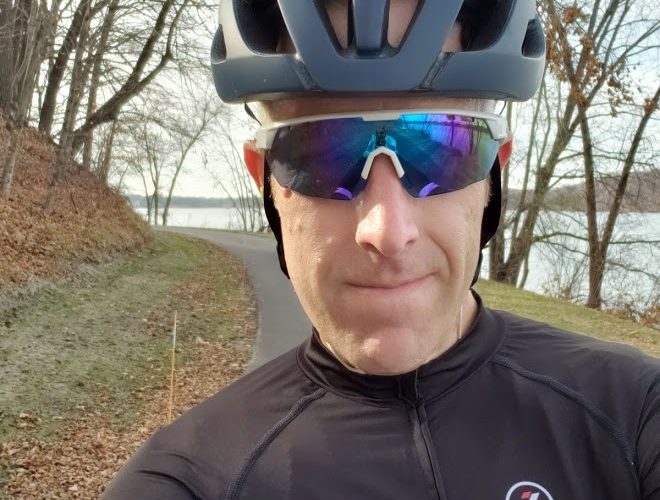
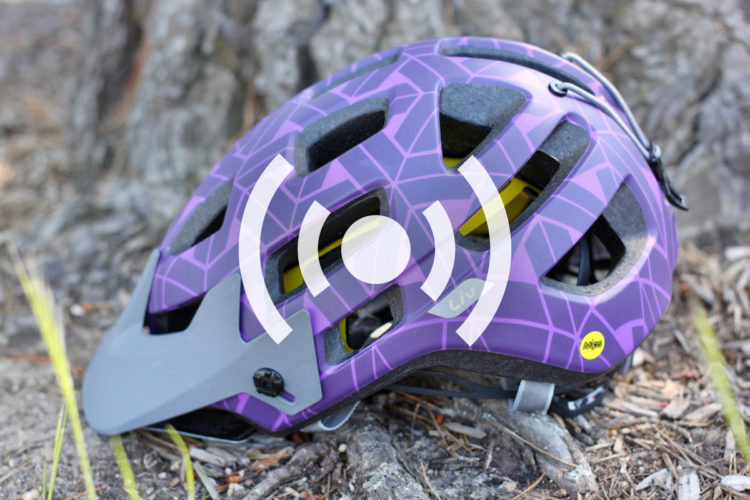






15 Comments
Mar 14, 2013
Mar 13, 2013
Mar 16, 2013
Jul 25, 2022
Jul 26, 2022
Mar 13, 2013
Mar 15, 2013
Jul 23, 2022
Jun 13, 2017
It's not a deal breaker for me, but I love the idea of a removable chin guard because my uphills are long and continuous in Mongolia and my downhills are long and fast. I recently tried on the Bell Super 2R and 3R, really hoping that this would be the answer. The medium was too small, and the large was too big.
I am learning that helmets truly are a very personal item -- need, style, fit. After getting above some base level of quality, fit and riding discipline seem to be the most important items.
Jun 13, 2017
Mar 14, 2013
When I started mountain biking I started with my old protect skate helmet until I watched a video on the testing of helmets and found mine was not up to standards! I very quickly purchased a brand new Protec helmet that is up to mountain biking standards and just feel better when I ride with it keeping my head safer!
Mar 14, 2013
Jul 24, 2022
Nov 22, 2016
Mar 14, 2013